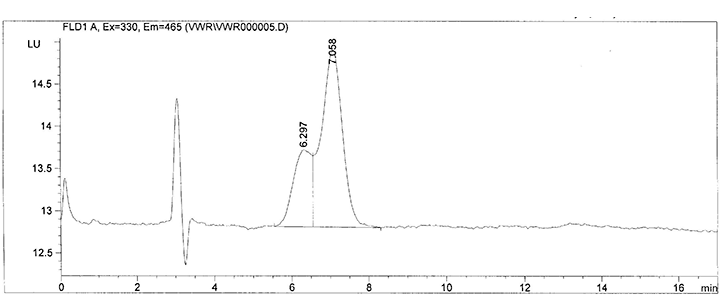Chromatography Quiz #30: Aflatoxins Decreased Signal – RESULTS
Pickering Labs would like to congratulate all of our winners for our previous newsletter’s Aflatoxins Chromatography Quiz: Mark Ritari from Anatek Labs, Thomas Scott from Diversified Laboratories, Tom Schneider from Suffolk County Water Authority, Narjes Ghafoori from LA County Environmental Toxicology Lab, Jiufeng Fan from Glaxo Smith Kline, and Ankita Gambhir from KFMC.
Winners will soon receive an Amazon eGift Card, redeemable towards a vast array of items store-wide at Amazon.com. Happy shopping, winners! We wish you cheers and success in the New Year!
Congratulations to our quiz winners!
Thank you all for your submissions!
.
The correct answers for the Aflatoxins quiz:
A decrease in signal could be due to a bad autosampler, old/degraded standard, aged reactor loop, or aged UV lamp in the photochemical reactor.
Chromatography Quiz #31 – Glyphosate Doublet Peak:
Identify the error made when running the Glyphosate chromatogram below and win a prize!
Simply email your answer and your full contact information to Rebecca at rlsmith@pickeringlabs.com by April 1, 2019 in order to win. You will receive email confirmation when your submission is received, and the troubleshooting answer and winner congratulations will be published in the next issue (to be anonymous, please notify Rebecca in submission).
Glyphosate Analysis for US EPA Method 547:
Normal Operating Conditions: (for reference only, changes may be reflected in chromatogram)
Customer’s Glyphosate Standard: 25 ppb, 100 µL injection
Pickering Column: 1954150 Cation-exchange Column for Glyphosate Analysis, 4 x 150 mm
Post-column Conditions for Pesticide Analysis:
Reagent 1: Oxidizing reagent – 100uL of 5% Sodium Hypochlorite in 950mL of GA116
Reagent 2: 100 mg of OPA, 2 g Thiofluor™ in 950 mL of GA104
Reactor 1: 36 °C, 0.5 mL
Reactor 2: ambient. 0.1 mL
Reagent flow rates: 0.3 mL/min
Detection: Fluorometer λex 330 nm, λem 465 nm




